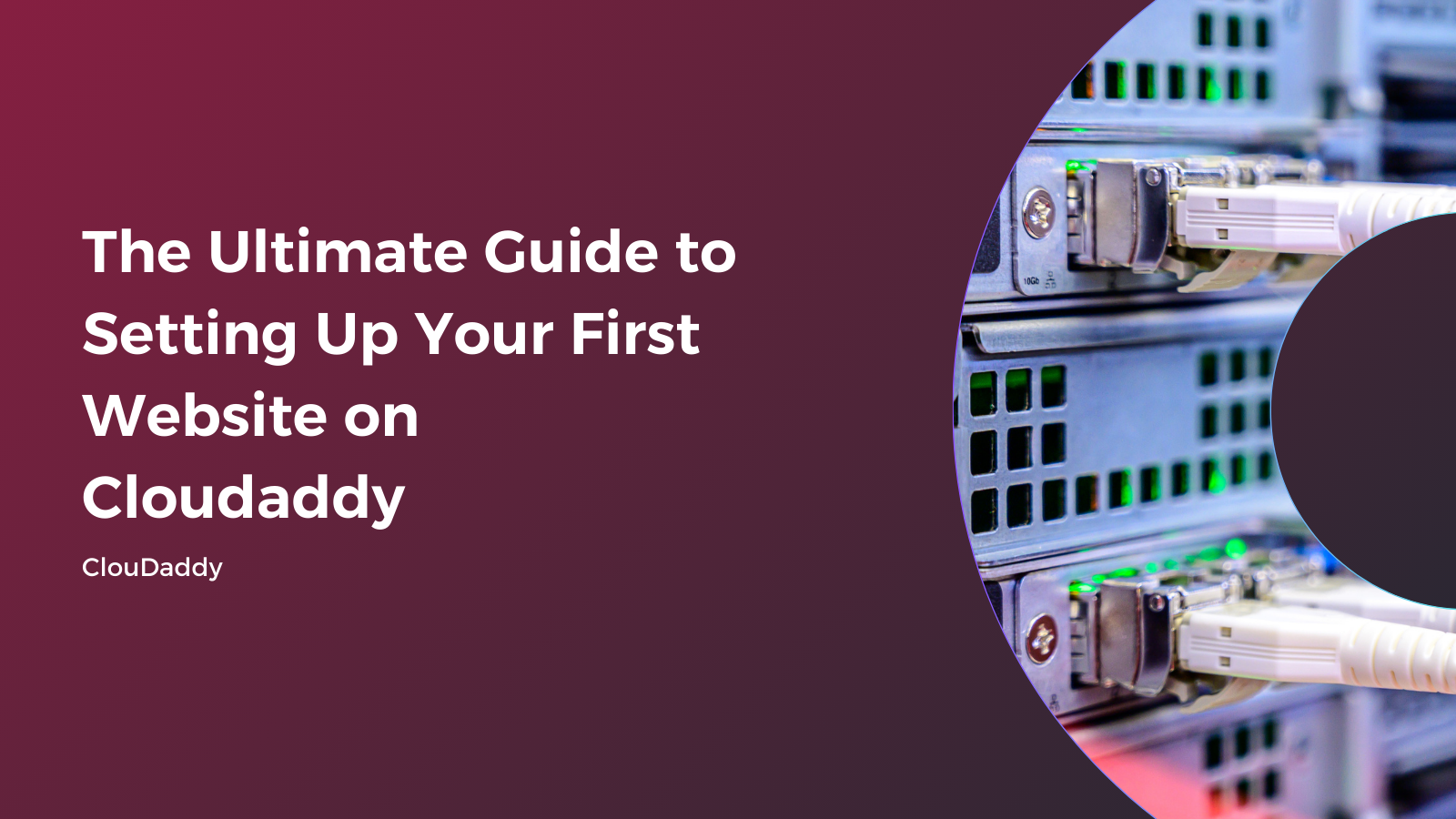The Ultimate Guide to Setting Up Your First Website on Cloudaddy

Starting your first website can be an exciting yet daunting task. At Cloudaddy, we’re here to make the process as smooth and straightforward as possible. Whether you’re launching a personal blog, an e-commerce store, or a portfolio, this ultimate guide will walk you through the essential steps to set up your first website on Cloudaddy.
Step 1: Choose Your Domain Name
Your domain name is your website’s online address, so it’s important to choose one that is memorable, relevant, and easy to spell. Here’s how to pick the right domain name:
- Keep It Short and Simple: Aim for a concise name that reflects your brand or purpose.
- Use Keywords: If possible, include keywords that relate to your content to improve SEO.
- Choose the Right Extension: While .com is the most popular, consider alternatives like .net, .org, or industry-specific extensions (like .store or .blog) if your desired name is unavailable.
- Check Availability: Use Cloudaddy’s domain search tool to see if your desired name is available.
Step 2: Select Your Hosting Plan
Once you have your domain name, it’s time to choose a hosting plan. Cloudaddy offers various options tailored to different needs:
- Shared Hosting: Ideal for beginners with small websites. It’s budget-friendly and easy to manage.
- VPS Hosting: A good choice for growing websites requiring more control and resources.
- Dedicated Hosting: Best for large websites or businesses needing maximum performance and security.
Evaluate your needs and choose a plan that fits your goals.
Step 3: Sign Up and Purchase Your Domain and Hosting
- Create an Account: Visit the Cloudaddy website and click on the “Sign Up” button to create your account.
- Select Your Hosting Plan: Choose the hosting plan that suits your needs.
- Register Your Domain: During the signup process, you can register your new domain or transfer an existing one.
- Complete Payment: Fill in your payment details to finalize your purchase.
Step 4: Access Your Control Panel
After signing up, you’ll receive an email with your account details. Log in to your Cloudaddy account and access your control panel (often referred to as cPanel or a custom dashboard). This is where you can manage your hosting account, set up email addresses, and install applications.
Step 5: Install Your Content Management System (CMS)
For most users, using a CMS like WordPress is the easiest way to build a website. Cloudaddy provides easy one-click installations for popular CMS platforms. Here’s how to install WordPress:
- Locate the Installation Tool: In your control panel, find the “Softaculous Apps Installer” or “WordPress Installer” option.
- Select WordPress: Click on the WordPress icon.
- Fill Out Installation Details: Choose the domain you want to install it on and fill in the site title, admin username, and password.
- Click Install: After entering all required information, click the “Install” button.
Step 6: Choose a Theme and Customize Your Website
Once WordPress is installed, you can log in to your WordPress dashboard:
- Choose a Theme: Go to “Appearance” > “Themes” and explore free or premium themes that suit your site’s purpose. Install and activate your chosen theme.
- Customize Your Site: Click on “Customize” under the “Appearance” menu to adjust site settings like colors, fonts, and layouts. You can also add your logo and adjust your homepage settings.
Step 7: Install Essential Plugins
Plugins enhance your website’s functionality. Here are some must-have plugins to consider:
- Yoast SEO: Optimize your site for search engines.
- Wordfence Security: Protect your site from malware and threats.
- Contact Form 7: Create contact forms for your visitors.
- WooCommerce: If you’re setting up an e-commerce site, this plugin is essential for managing your online store.
To install a plugin:
- Go to “Plugins” > “Add New” in your WordPress dashboard.
- Search for the plugin you want, click “Install Now,” and then activate it.
Step 8: Create Essential Pages
Every website needs key pages to provide valuable information to your visitors. Here are some essential pages to create:
- Home Page: Introduce your website and highlight what you offer.
- About Us: Share your story and explain your mission.
- Services/Products: Detail what you offer, including descriptions and pricing.
- Contact Page: Provide ways for visitors to reach you, including a contact form or email address.
- Privacy Policy and Terms of Service: Include these legal pages to comply with regulations and protect your website.
Step 9: Launch Your Website
Once you’re satisfied with your site’s design and content, it’s time to launch! Before going live, consider these final checks:
- Proofread Content: Ensure there are no spelling or grammatical errors.
- Test Functionality: Check all links, forms, and buttons to ensure they work correctly.
- Optimize for Speed: Use tools like GTmetrix or Google PageSpeed Insights to check your site’s speed and implement suggestions for improvement.
Step 10: Promote Your Website
After launching, it’s time to promote your website and attract visitors. Here are a few strategies:
- Utilize Social Media: Share your content on social media platforms to reach a wider audience.
- Implement SEO Strategies: Optimize your website for search engines to improve visibility and rankings.
- Consider Paid Advertising: Explore options like Google Ads or social media ads to boost traffic to your site.
Conclusion
Setting up your first website on Cloudaddy is a straightforward process that can be accomplished in just a few steps. By following this guide, you’ll have a fully functional website that reflects your brand and engages your audience. With Cloudaddy’s reliable hosting and excellent support, you’re well on your way to creating a successful online presence. Ready to start your journey? Sign up with Cloudaddy today and unleash your creativity!





